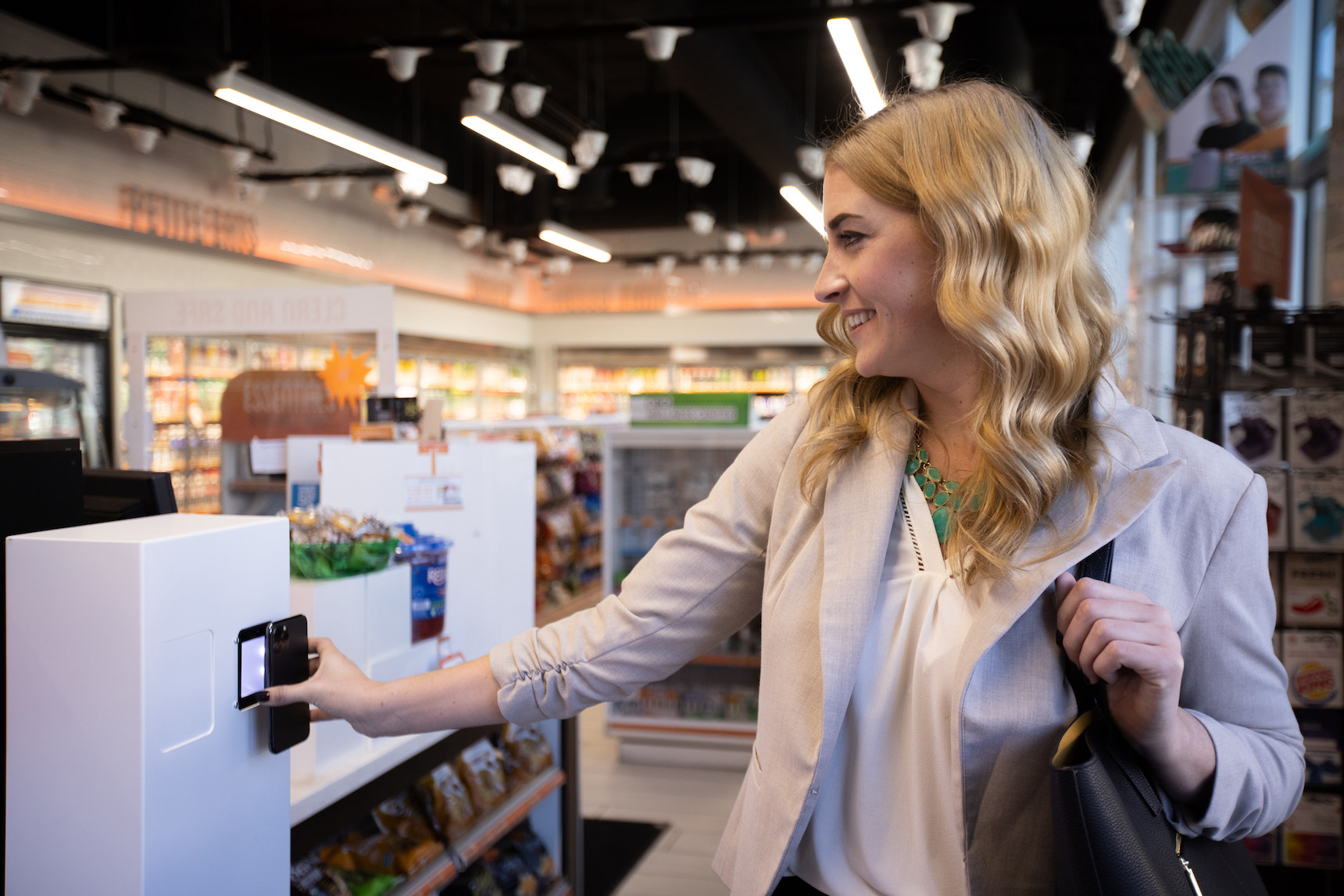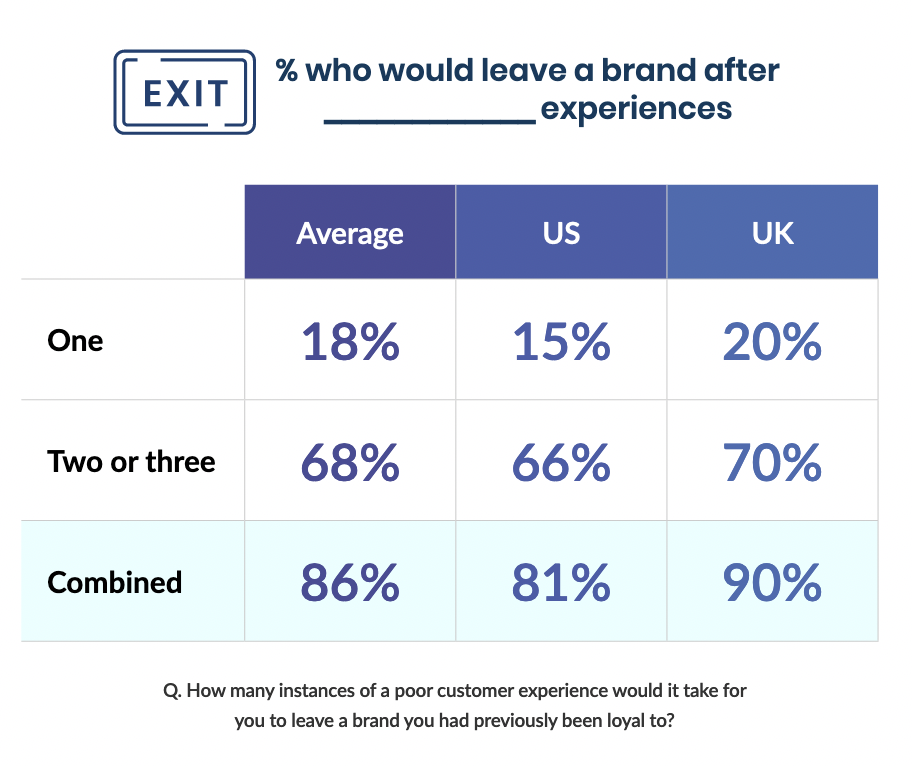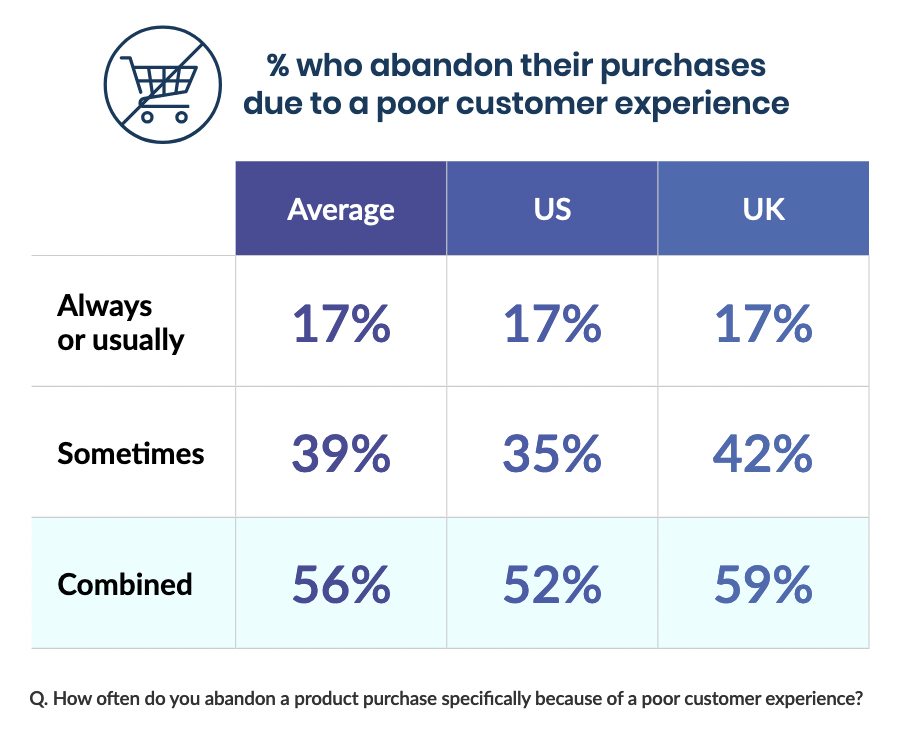
08 Sep How to Use AI to Develop Cohesive Customer Experiences Across Retail Channels
As competition grows in the retail space, business owners — especially brick-and-mortar retail owners — have shifted their attention to developing and delivering positive and memorable customer experiences to shoppers.
 To retain customer loyalty in the long term, businesses must deliver these positive experiences consistently. Customers can abandon a brand after as little as a single poor in-store experience. This article will explain how AI can prevent this and help retailers maintain impeccable consistency in their services and in-store experiences.
To retain customer loyalty in the long term, businesses must deliver these positive experiences consistently. Customers can abandon a brand after as little as a single poor in-store experience. This article will explain how AI can prevent this and help retailers maintain impeccable consistency in their services and in-store experiences.
Why Modern Retailers Need to Consistently Create Positive Customer Experiences
With ecommerce platforms offering virtually unlimited options for brands and price points, brick-and-mortar stores must entice customers using more than just extensive selections. Online shopping is so easy that shoppers are more likely to abandon their purchases if they feel their in-person customer experience is subpar.
 Brick-and-mortar retailers have a significant advantage over their ecommerce counterparts in that they have a better opportunity to make customers feel engaged and valued. Social media also makes it easy for customers to share positive experiences and amplify negative reviews. This puts immense pressure on retailers to deliver positive shopping experiences — and there isn’t much room for error.
Brick-and-mortar retailers have a significant advantage over their ecommerce counterparts in that they have a better opportunity to make customers feel engaged and valued. Social media also makes it easy for customers to share positive experiences and amplify negative reviews. This puts immense pressure on retailers to deliver positive shopping experiences — and there isn’t much room for error.
5 Ways to Develop Consistent Customer Experiences in the Age of Omnichannel Retail
1. Ensure Consistent Communication Between Team Members
Between logistics staff, customer service teams, cashiers, and shelf-stockers, there are many people involved in operating a retail store — and managing all the elements is even more difficult in an omnichannel setting. Team members must be informed and empowered if they are to deliver consistent experiences across retail channels.
To deliver consistently positive experiences, retailers must bridge the gap between operational teams with easy access to necessary information. Software can help retailers democratize operational data so customer service personnel can engage with customers armed with important information such as item availability and store location data.
2. Treat Your Customer Experience as a Key Differentiator for Your Brand
Customer experience has always been an important part of running a retail business, and this is even more true now that younger shoppers are prioritizing experiences over items. Retailers that deliver memorable in-store experiences can capitalize on this trend by delivering a shopping experience to rival their competitors’.
3. Empower Staff to Engage With Customers in a Meaningful Way By Relieving Them of Low-Value Tasks
Retail leaders can design stellar customer experiences from the highest levels of the organization — but staff members must be able to deliver them. Retail staff are often stretched thin by operational demands such as scanning items and accepting payments.
These processes are ripe for automation and doing so allows ground staff to connect with customers and provide a more personal and engaging shopping experience. Staff members are usually the touchpoint customers interact with most often and are the best way to ensure a positive experience.
4. Collect and Respond to Customer Feedback Through Digital Channels
Even if retailers are able to consistently deliver positive customer experiences, customer preferences are always changing and it’s important for retailers to keep their fingers on the pulse of consumer trends at all times. They can do this by collecting and acting on feedback from their target customers. Omnichannel retailers often have multiple channels such as feedback forms in-store and chat applications on their websites to collect customer insight. Digital channels such as online surveys and polls provide retailers with a chance to quickly and easily collect, organize, and analyze customer feedback.
5. Use Computer Vision to Build Autonomous Retail Settings Without Excessive Smart Fixtures and Costly Equipment
As customers demand efficient and engaging shopping experiences, retailers are increasingly looking for technology that can help them deliver. Autonomous retail settings allow retailers to do this without changing their overall inventory, store location, or operational model. However, there is a perception that autonomous retail requires extensive financial outlay for smart fittings and specialized equipment. A camera-only solution, such as AiFi’s, uses cutting-edge software to allow retailers to introduce autonomous shopping experiences with minimal downtime and financial investment.
How AI Helps Retailers Deliver Consistent Customer Experiences
Ultimately, a retail brand’s success depends on its ability to deliver positive customer experiences in an omnichannel retail environment. However, attempting this manually without understanding the customers’ needs sets the stage for failure in the long term. AI-powered data collection systems allow retail brands to evaluate their customers’ behavior, assess their needs, and build experiences that are curated for specific customers.
AiFi’s computer vision-only technology allows retailers to obtain next-generation analytics previously only available on e-commerce platforms. Retailers are able to leverage privately and securely collected data to then adjust inventory levels, customize planograms, and modify store signage. This allows brands to make the most of omnichannel retail by creating experiences that encourage increased engagement, improved customer loyalty, and higher conversion rates.
Learn more about how our technology can help you deliver positive customer experiences across all your retail channels. If you found this article helpful, please share it on social media.





















